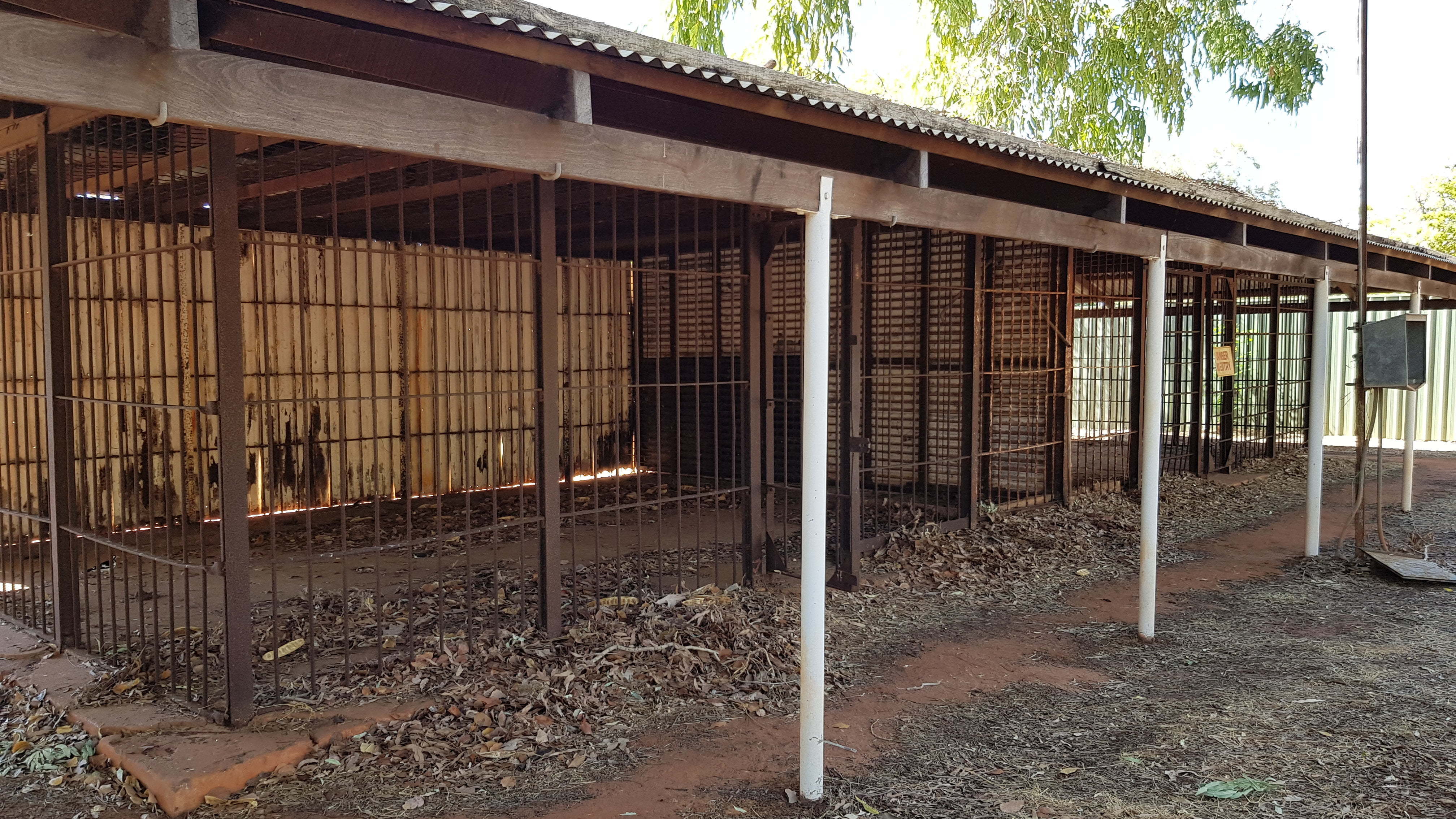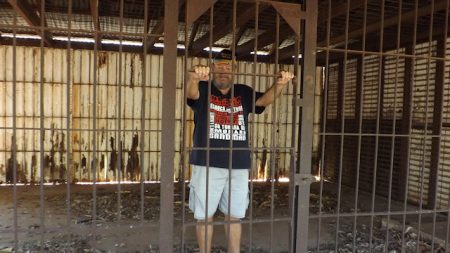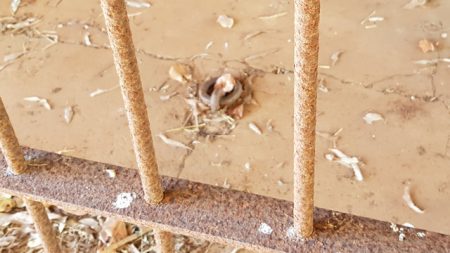
The Old Derby Gaol is the only remaining structure from a police building program started in 1896, with the first gaol built in 1887.
The site comprised of residential and office accommodation for the Inspector and the Corporal, kitchen, store, toilets, stable, and a cell block.
Police have been present in Derby since 1883 and the first recorded Aboriginal interaction in 1882 with an arrest by police from Roebourne for the killing of a settler. The Prison Boab Tree ![]() is a few kilometres south of Derby where prisoners were detained before the gaol was established.
is a few kilometres south of Derby where prisoners were detained before the gaol was established.
In 1906, Derby had the second highest number of people convicted in the northern district. With an overcrowded cell block, a new gaol was built, the Old Derby Gaol.
The new gaol was specifically for the detention of Aboriginal prisoners, although non-Aboriginal prisoners were normally held in the original cell block, they were eventually held here too.

Designed for up to 30 prisoners, by 1907 the Old Derby Gaol held up to 61 people. In 1926, a covered pan for ‘nightsoil’ and guttering as the urinal was the extent of the sanitary features.
Overcrowding was far worse in later years. In the 1950s, government institutions and church missions closed on the north coast and at Sunday Island, forcing hundreds into Derby camping reserves. More people moved to the Derby camping reserves in the 1960s after the introduction of award wages, social security benefits and schooling.
In 1966, the number of people detained had grown to 109 people. The Old Derby Gaol was finally closed in 1975 after government officials responded to the poor conditions.
The Old Derby Gaol has survived due to it being constructed of iron bars and concrete with timber only used for framing to support the roof. The roof collapsed by 1990 and was restored in 1996.
The rest of the policing buildings were not so lucky. Heavily damaged by termites, they were demolished in the 1970s. Considering the gaol wasn’t closed until around the same time, it says a lot about how bad the conditions were.
The gaol was under threat of being demolished or relocated for many years, until it was protected in 1988 after being classified by the National Trust.
The gaol was first built by prisoners using mud bricks and corrugated iron and later updated to its present construction.

The gaol is open on three sides with corrugated iron lining the bars between the two cells and on the northern wall. Fourteen ring bolts on the floor were used to chain prisoners to.
The Old Derby Gaol, like many others, were filled with Aboriginal people that were breaking government laws that were supposed to protect Aboriginals.
Aborigines were exploited by the pearling industry, with many kidnapped by blackbirders. The 1905 Aborigines Act was meant to protect them from exploitation and suffering by restricting and controlling movements.
The act was in force until the 1960s and contributed to the stolen generation. Under the act, the Chief Protector was the legal guardian of all Aboriginal children and police had to carry out the policy of removing them from their families.
At the Old Derby Gaol, a story tells of two sisters taken from their mother in 1910. Two Aboriginal police boys (what Aboriginal trackers working for the police were called) asked the girls in their language if they wanted a ride on the horse and buggy.
The sisters accepted, another boy ran away understanding what the ride meant. The sisters were taken away and placed into the Old Derby Gaol.
They were taken down the Derby Jetty to be shipped to the Mission. By the time their mother arrived it was too late.
There are information panels telling the history of the gaol and the Aboriginals, including material from Nyikina Elders and other members of the Derby Aboriginal Community.
To get there:

Coming from the Great Northern Hwy, continue to Derby on the Derby Hwy (continue straight ahead from Broome or turn right from Fitzroy Crossing). Follow Derby Hwy all the way into Derby, about 39km.
At the end of the Derby Hwy, continue straight ahead north from the Woolworths supermarket on Loch St. Follow Loch St for 1.3km and the Old Derby Gaol is on the right. Continue ahead for 80m to do a U-turn back to Old Derby Gaol.

